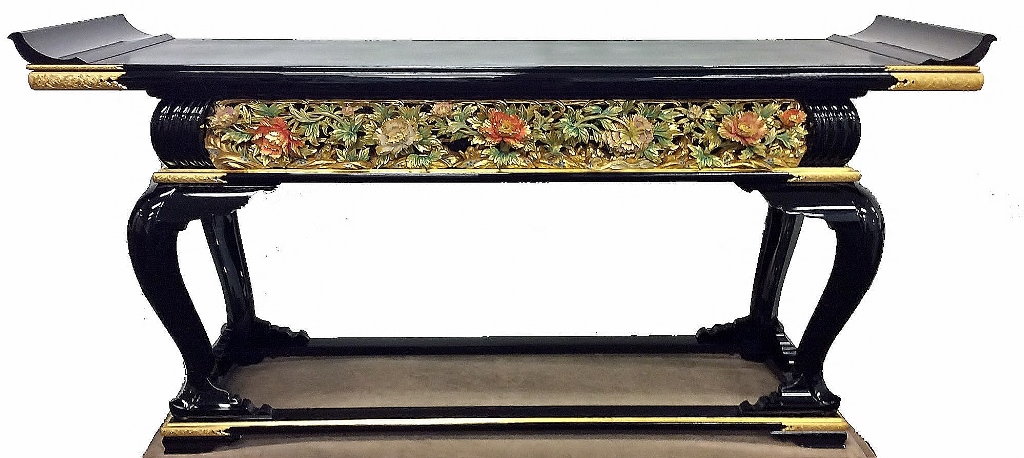OWARI Butsugu (Buddhist Implements)

Owari Buddhist Implements traditional crafts that have been produced in Nagoya, Aichi Prefecture since the early Edo era. The main material used is high-quality wood collected from the Owari outskirts. In the late Edo era, the production of these implements developed as a secondary source of work for lower-ranking samurai. Wooden implements featuring lacquer work are the most prominent, and Owari Butsugu are well-known for their vivid colors.
Feature
Features • Most items are wooden implements featuring lacquer work, and each process in their production has been specialized to indicate subtle differences according to the Buddhist sect that will use them, either in a temple or a home. High-quality implements can be delivered on a large scale.
• Today, throughout all of Japan, the wooden fish (or wooden bell) and standing bell wooden stands are only created in the Owari area.
How to make
Owari Butsugu are created through collaborative division of labor according to each production process. In order to create different Buddhist implements to accompany each sect, the item’s use, the temple where it will be used, the shape of each altar and its size, Owari Butsugu are created by traditional artisans with refined techniques in wooden frame composition, carving, lacquer work, coloration, metalworking, gold leaf application/gold and silver powder application and gold-inlaid lacquerware, before final completion.

